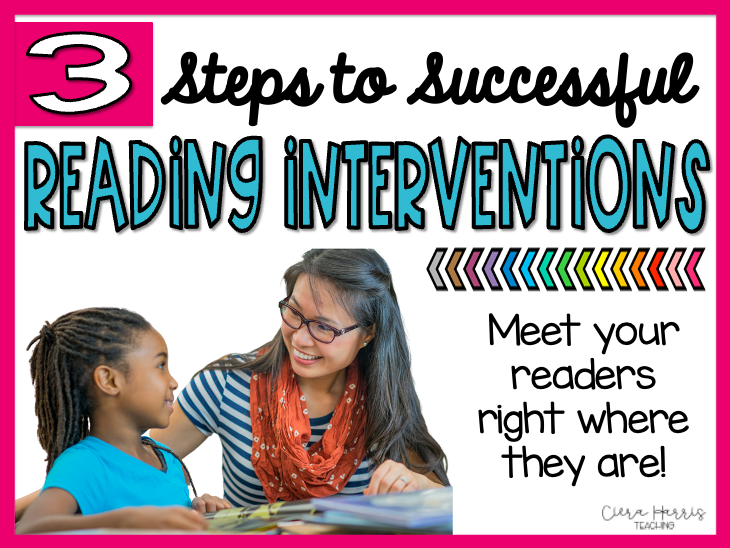As a coach, I was in and out of many teachers’ classrooms. And over the years I collected an inventory of some of the most common mistakes teachers make when teaching reading. Whether it was in Kindergarten or up to 5th grade, the same mistakes were being made. So what are these common mistakes teachers make when teaching reading? Let’s find out!

Reading Mistake #1: Teaching the text and not the skill
This is one of the reasons I HATE most reading curriculums and schools that require teachers to teach the stories in basal readers. In my first few years of teaching, my reading routine looked something like this: The weekly story was read on Monday. We would discuss the characters and the rest of the important story elements. On Tuesday we would listen to the story on CD. On Wednesday the students would read the story with partners to help with fluency. Then on Thursday, we would read it one last time before our test on Friday. Then on Friday, we would give the curriculum assessment of the story. This is NOT how to teach reading!
So what is wrong with this? In one sentence, it’s this: I was teaching the STORY and not HOW to comprehend. I don’t care if students can memorize the story of Tabby the Cat. And that’s basically what it was, memorization. I was asking students to regurgitate the story back to me in assessment form. But by Friday they should have known that story inside and out. They read it with me at least 4 times, PLUS they took their book home each night to read it for homework.
As a coach, I saw this mistake numerous times as well. We have to remember that we need to teach the skill, NOT the text. So how do we do this?
We need to keep our focus on the standard/objective that we’re teaching. Then we model and teach our students how to use that skill or strategy using the text. We keep our focus on getting students to being able to use the skill on any given text we present to them. Using a variety of texts throughout the week is important here. Focus your questions on the skill. Your anchor charts and visuals should be about the skill. The story from the curriculum is just support to teach the skill.
Mistake #2: Jumping in too deep
Have you ever heard the quote from Albert Einstein that says “The repetition of doing the same thing over and over again and expecting different results is the definition of insanity” This is what I think of when I see teachers asking students over and over again to attempt a skill without trying something different. If you know anything about my

philosophy on how to teach reading comprehension, you know I’m a huge proponent of backing up and really breaking down the skill a step at a time. It’s like asking students to jump into the deep end over and over again to learn how to swim. It won’t work! Especially if the students have NO schema about swimming, pools, water, etc.
So think about the students coming to you and have no idea what ‘main idea’ means. On day one we shouldn’t ask them to FIND the main idea, even if we have an awesome lesson and model it beautifully. That’s too much too fast. We need to back up and introduce the skill to the students. Show them what it is, how it works, and why it’s important. Come read about how I break down any skill/strategy using my Building Comprehension formula.
So the next time you go to teach a skill, don’t throw your students overboard before they are ready!
Reading Mistake #3: Not modeling
Okay, I get it. Time is always an issue in the classroom, but modeling, especially in reading, is one of the most important pieces of your lessons. Reading is a very abstract concept. It’s not like math which is more black and white. We can’t just break everything down into basic steps to follow and then ta-da, we have an answer. No, students need us to take the time to model exactly how and where to use specific skills and strategies when we read.
Here’s another piece about modeling that I see quite often. A teacher who thinks they are modeling, but in fact, they’re not. So what exactly does a true ‘model’ look like? I have an entire blog post of great tips and tricks to help you out. But the one piece you need to check to see if your model is a true model is this: Are you talking TO your students? If you are, then it’s not a model. Modeling is your 2 minutes on stage to truly show the process of whatever skill or strategy you’re teaching about from top to bottom without any interruption. Students need to see and hear everything that happens with being asked any questions. They need to hear what’s in your mind and know exactly when and what to do.
I have seen teachers come to the front board or the anchor chart and start the lesson and never truly model the skill or strategy. Instead, they verbally walk through the strategy but stop and ask students what they should do next or why this is right or wrong. That’s called guided practice! True modeling is you in front of the students walking through the strategy on your own. And it’s one of the most important things you can do to help your readers!
Mistake #4: Not taking daily assessments

This is one of my biggest pet peeves and something I unfortunately see a lot in classrooms. If you’re not going to take the time to see if the students learned what you taught, then why teach it? Giving a test at the end of the week for a grade is too late for teachers to see how students are doing on skills and strategies. Daily exit tickets or checks for understanding are vital for multiple reasons.
First, they give the teacher important information on how to change their lessons for the next day. They tell which students need support, who to pull for a quick small group, who need a differentiated lesson, and even who to ask questions to the next day. There is so much you can do with taking daily exit tickets at the end of your lessons that can transform your instruction and your students understanding. When I was in the classroom, I had a pile of 3-4 exit tickets to check each night before I went home. I made my piles of who did great and who needs help and kept them on my desk to hand back the next lesson. It was these daily assessment that made a huge difference in my instruction and my students success.
Reading Mistake #5: Assuming students use strategies
This is a big one. Reading strategies (visualizing, making connections, etc) are what truly get students to be present and active thinkers when reading. Research shows that these strategies are far more impactful to students success when reading than any of the skills. Not sure of the difference between skills and strategies, check this out! So what’s the mistake? Many teachers assume that students KNOW how to do these strategies. They assume students can visualize. They think students are able to access their schema easily. What’s not happening in many classroom is deep and explicit teaching, every year, on the core reading strategies.
If I said I have a formula for you that will ensure your students success when reading, would you want to use that formula? Of course you would! Well, teaching reading strategies intentionally every year is it! Don’t assume, even in the upper grades, that students have got it and that you need to move onto more important skills like main idea and text structure. Without a solid foundation of strategies that are actually being used, those skills don’t mean anything! There are many benefits to teaching the strategies, so don’t be one of the teachers making this mistake!
So what do you think? Are you a teacher making one of these mistakes? If so, how do you plan on making changes to better your instruction for your students? If you want to save this post for later, make sure to pin the image below!






